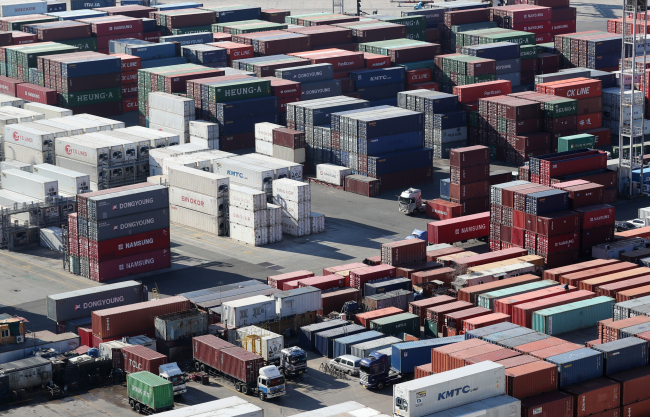The South Korean economy grew at the slowest pace in six years in 2018 as shrinking corporate investment weighed heavily on Asia's fourth-largest economy, central bank data showed Tuesday.
The nation's economy expanded 2.7 percent on-year in 2018, slowing down from 3.1 percent the previous year, according to the advance estimate by the Bank of Korea.
 |
(Yonhap) |
It is the most sluggish on-year growth since 2012, when the country pulled off 2.3 percent.
But it met the BOK's earlier growth forecast of 2.7 percent for 2018.
For the final quarter of last year, the economy rose 1 percent from three months earlier, jumping from a 0.6 percent on-quarter gain in both the second and third quarters.
The central bank said South Korea's real gross national income likely surpassed $31,000 per capita last year for the first time. In 2017, the country's per capita income reached $29,745.
Private consumption, government spending and exports led the growth, while construction and facility investment remained in the doldrums.
Consumption rose to a seven-year high of 2.8 percent last year and fiscal spending jumped 5.6 percent on-year, the steepest on-year rise since 2007.
Exports, one of the biggest supporters of the South Korean economy, grew 4 percent on-year.
However, the upside mode was partly offset by sluggish corporate investment.
Construction investment fell 4 percent last year, marking the sharpest fall since the 2008 Asian financial crisis. Facility investment contracted to a nine-year low of 1.7 percent.
By industry, growth of the manufacturing sector slowed down to 3.6 percent from 2017's 4.4 percent, while the construction industry plunged to a seven-year low of 4.2 percent.
But the service sector rose 2.8 percent.
Gross domestic income climbed 1.1 percent last year, marking the lowest on-year growth since 2008 due to a rising trend of oil prices.
For the fourth quarter alone, government spending lent the biggest support to the better-than-expected 1 percent growth.
Fiscal spending rose 3.1 percent on-quarter in the October-December period, the largest gain since the first quarter of 2010.
Private consumption rose 1 percent, while facility and construction investment advanced 3.8 percent and 1.2 percent, respectively.
But exports dropped 2.9 percent in the three-month period.
"The government led pump-priming efforts to cushion the negative growth of exports in the final quarter of last year," said Park Yang-su, director general of the economic statistics department at the BOK. "In addition, production in the agriculture and construction industries rebounded in October as the weather cooled." (Yonhap)








